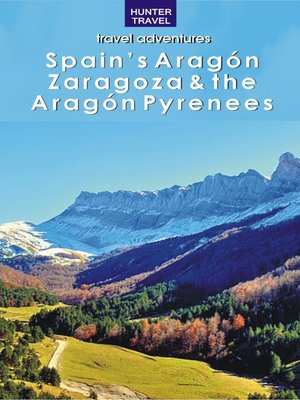
Sign up to save your library
With an OverDrive account, you can save your favorite libraries for at-a-glance information about availability. Find out more about OverDrive accounts.
Find this title in Libby, the library reading app by OverDrive.



Search for a digital library with this title
Title found at these libraries:
| Library Name | Distance |
|---|---|
| Loading... |
When the Moors spread across the country during the eighth century they could never penetrate the Pyrenees, though they left quite a legacy in other parts of Aragón. By the ninth century the Christians had begun to reconsolidate in the Pyrenees; they formed the Kingdom of Aragón and made Jaca - today the most popular village among mountain sportsters - their earliest capital. The Romanesque churches scattered throughout the Pyrenees stand as a genteel testament to the devotion and determination of these rallying Christians. During the 12th century they had worked their way south into the wide-open landscape of the Rio Ebro basin in Aragón's central region. In 1118, under King Alfonso I, they overtook the Moors of Zaragoza, the largest city in the basin. As throughout Spain during this period, the Moors who remained on the land under Christian domain came to be called Mudéjars. For the next 300 years the many skilled artisans among them merged their traditional Islamic decorative motifs with European architectural techniques with remarkable results. Mudéjar monuments are still evident in Zaragoza. But it was in southern Aragón, a sparsely populated, dry region buffeted from Valencia and Castilla-La Mancha by the Iberian mountain chain, that the Mudéjar style truly manifested itself, particularly in the provincial capital of Teruel. That tradition, however, came to an end when Ferdinand II of Aragón married Isabella of Castilla in the 15th century and the Moors were expelled, setting the framework for Spain as a unified, Christian nation. As Spanish cities go, Zaragoza is one of the finest, a blend of the traditional Castilian air felt in a metropolis like Madrid and that cosmopolitan Euro-vibe that characterizes Barcelona. The capital of Aragón is a stylish, highly modernized city wrapped around an old quarter on the banks of the Rio Ebro. This area conforms to the original settlement of Caeseraugusta founded by the Romans in 24 BC. The story of 2,000 years can be haphazardly pieced together in a walk across the city's beloved Plaza del Pilar, where Roman ruins With a little imagination it is still possible to visualize the rectangular site of the original Roman town of Caesaraugusta, established by the emperor in 24 BC in the area of the Plaza del Pilar. The Museo Foro Romano de Caesaraugusta shelters excavations in the Plaza de la Seo of a Roman market dated to 19 BC during the time of Caesar Augustus and a town forum built in the first century AD. The Pyrenees Mountains of Aragón comprise the heart of this impressive range separating Spain from France in its skyward thrust from the Bay of Biscay to the Mediterranean Sea. Where the eastern and western flanks of the range descend in the neighboring regions of Cataluña and Navarra, creating gentler landscapes more tolerant of human activity, the mountains of Aragón reach for the heavens in a grandiose setting of alpine extremes and isolation rarely equaled in the country. In its northernmost heights, Aragón claims the highest peaks in the Pyrenees, some of which are still capped by the last surviving Spanish glaciers. These are an undeniable lure to climbers and alpinists and guaranteed to put a smile on any naturalist's face. You can look above to see eagles, falcons and vultures carving the sky or below to the lush valleys descending through fields of wildflowers tramped by chamois, wild boar, roe deer and backpackers. These valleys shelter ruined villages that have long since been deserted and others that have profited tremendously from the surge of interest in the outdoors during the last 20 years. Aínsa, Benasque and particularly Jaca serve as gateways into the wildest reaches of the Aragón Pyrenees and the plentiful...







